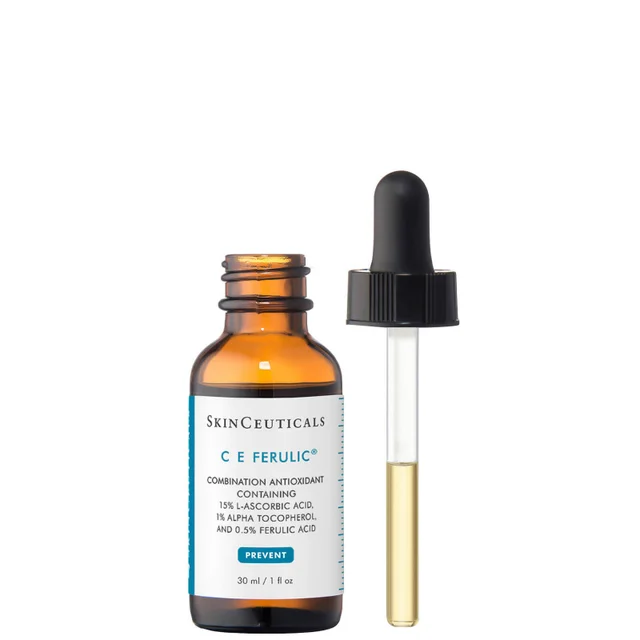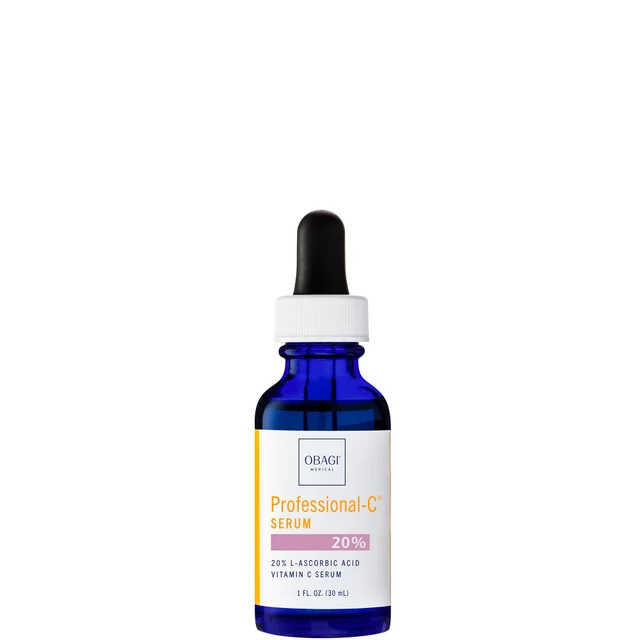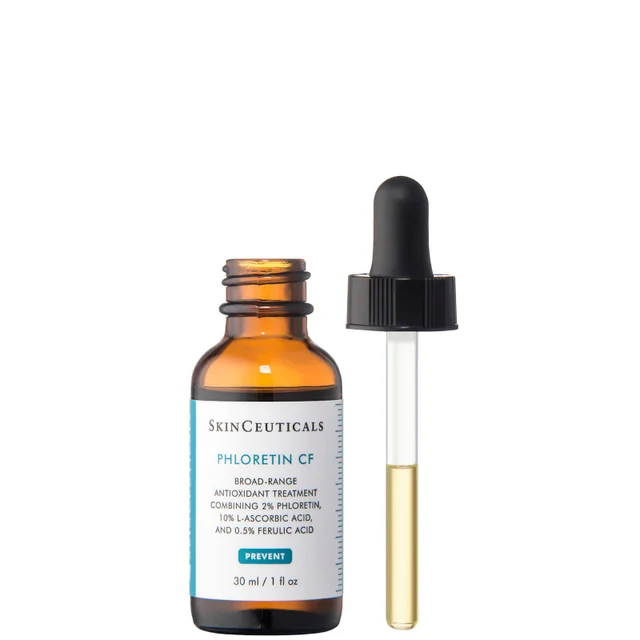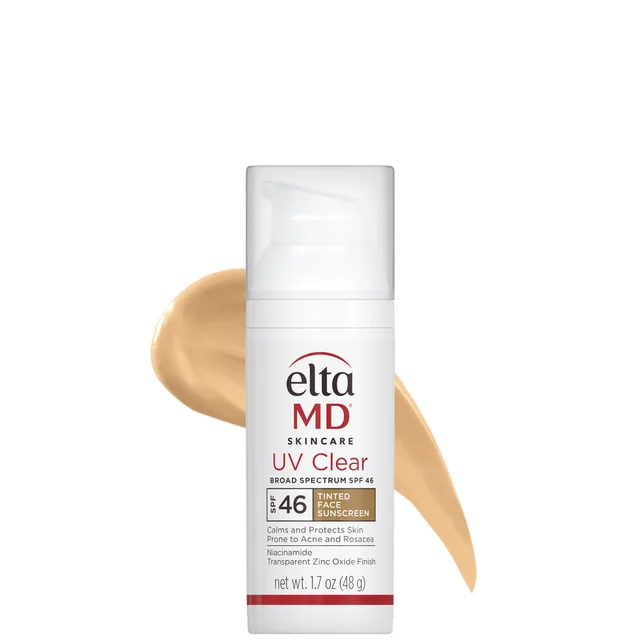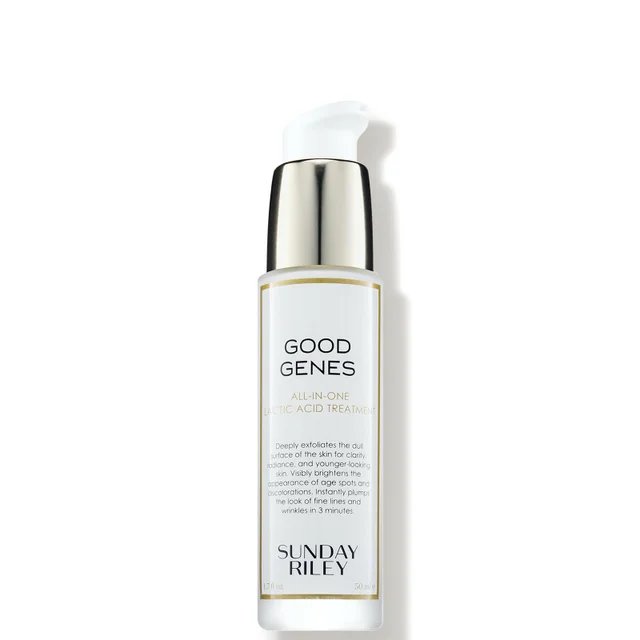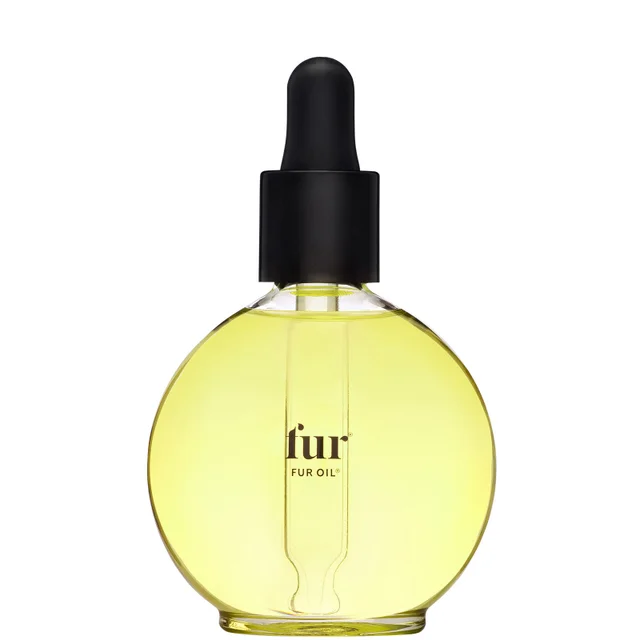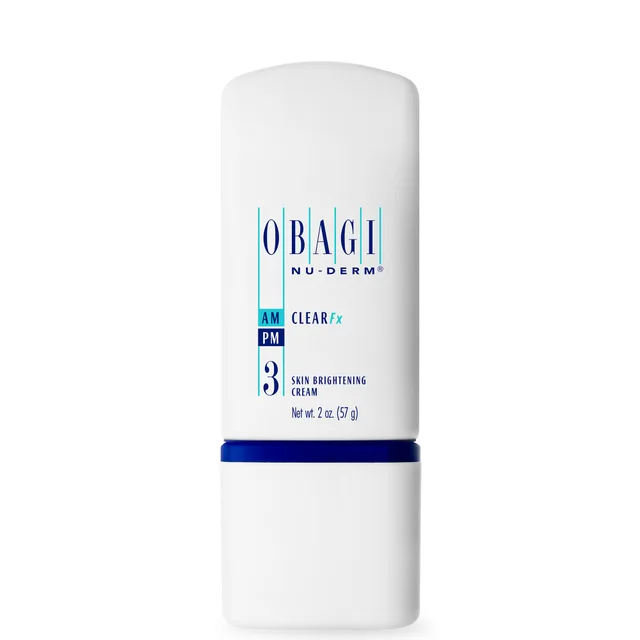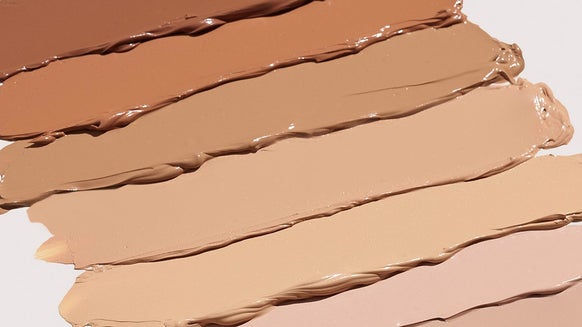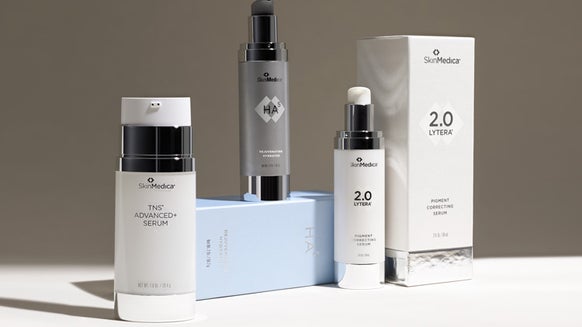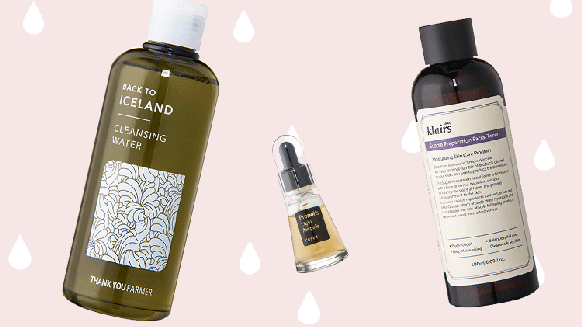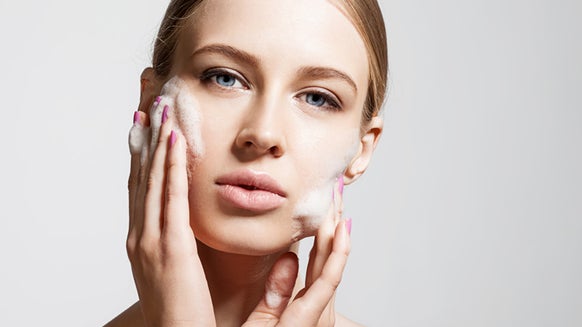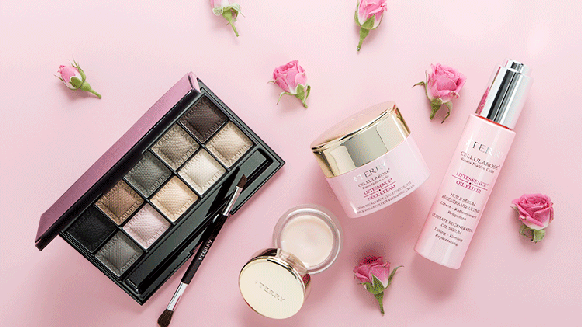The Top Ingredients You Need to Get Rid of Hyperpigmentation
Hyperpigmentation may be a complexion killer for women worldwide, but you do have options when it comes to lightening those dark patches. While there is no magic pill that will rid dark spots, age spots or melasma overnight, several treatments are available that will help to improve hyperpigmentation when used consistently. From prescription skin-lightening creams to over-the-counter creams, these clever ingredients can help to create a more even skin tone.
Table of Contents:
- What is Hyperpigmentation?
- The Causes of Hyperpigmentation
- Where Can You Get Hyperpigmentation?
- The Best Skin Care Products to Treat Hyperpigmentation
What is Hyperpigmentation?
Hyperpigmentation is a common skin condition that is nothing more than a darkening of certain areas compared to the surrounding skin tone. It typically occurs when an excess of melanin, the pigment responsible for giving its color, is excessively produced by any one factor, including sun exposure, hormonal changes (pregnancy, menopause, or birth control pills), inflammation, skin injuries, or certain medications.
Hyperpigmentation can affect pretty much any skin type or ethnicity, but certain factors may make some people more susceptible to it than others. For example, darker skin tones, which naturally produce more melanin, may notice additional areas of darkness compared to someone with lighter skin. And while hyperpigmentation doesn't discriminate against age, years of sun exposure and damage can cause hyperpigmentation to be more prevalent in middle-aged and older people.
Not all types of hyperpigmentation are the same. Some are short-lived, others are red, brown, pink, or black, and the way they look can either be a small spot or a more diffuse patch, as in the case of melasma, a type of hyperpigmentation. Melasma is frequently seen in pregnant women, and fluctuations in hormone levels often trigger it. These hormonal changes can contribute to the development of additional melanin, resulting in hyperpigmentation.
Across the board, hyperpigmented areas of skin usually have well-defined borders, although they may appear as isolated patches or clusters of spots on the skin. Hyperpigmentation can occur virtually on any part of the body, but it is most commonly found in areas exposed to the sun, such as the face, hands, arms, shoulders, and legs. On the face, it's normal for the cheeks, forehead, bridge of the nose, and upper lip to display signs of hyperpigmentation.
Usually, topical products are the first line of treatment for improving the symptoms of hyperpigmentation, but if that doesn't work, dermatological procedures may be recommended.
The Causes of Hyperpigmentation
Several factors can cause hyperpigmentation, and what causes it for one person may differ for another.
Sun exposure is the largest instigator of hyperpigmentation. UV rays from the sun stimulate melanin production within the skin as a defense mechanism against sun damage. Even though melanin is responsible for giving the skin a tanned look, it can also cause dark sunspots to appear. Prolonged sun exposure without adequate protection can lead to sun-induced hyperpigmentation, which results in freckles, sun spots, or uneven skin tone.
Another culprit of hyperpigmentation is fluctuating hormone levels, which can trigger hyperpigmentation more commonly in women. Skin inflammation caused by acne, eczema, psoriasis, or dermatitis can lead to post-inflammatory hyperpigmentation (PIH). Inflammation triggers an overproduction of melanin in the affected areas, resulting in dark patches or spots as the skin heals. Similarly, any type of trauma to the skin, including cuts, burns, abrasions, or surgical or cosmetic procedures, can lead to hyperpigmentation during the healing process. This is known as post-inflammatory hyperpigmentation (PIH), where the affected area becomes darker than the surrounding skin.
Certain medications or treatments can increase the skin's sensitivity to sunlight or cause pigmentation changes as a side effect. Medical conditions that affect hormone levels, such as Addison's disease or Cushing's syndrome, can also cause changes in pigmentation due to hormonal imbalances.
Genetic predispositions can influence hyperpigmentation, too. Some people may have a genetic tendency to produce more melanin or have a higher risk of developing certain types of hyperpigmentation.
Where Can You Get Hyperpigmentation?
Hyperpigmentation can occur in various parts of the body, including the face and legs, are often triggered by a range of factors such as sun exposure, hormonal changes, inflammation, and certain medications.
On the face, sun-induced hyperpigmentation, also known as sunspots or age spots, are dark patches that develop due to prolonged exposure to ultraviolet (UV) radiation from the sun. They commonly appear on areas of the face that receive the most sun exposure, such as the cheeks, forehead, and nose. Melasma also occurs on the face, typically on the forehead, cheeks, upper lip, and chin.
But the face isn't the only area where hyperpigmentation can occur. Although hyperpigmentation in the legs is slightly less common, they are a sun exposed area and
can develop hyperpigmentation over time due to UV radiation. The thighs and shins are most prone to bearing the effects of hyperpigmentation. Dark patches can also develop on the legs in areas with repeated friction or rubbing, such as the inner thighs or areas where clothing or accessories (like tight socks or boots) constantly rub against the skin. Like on the face, hyperpigmentation can also occur on the legs in response to conditions such as eczema, psoriasis, insect bites, or shaving irritation.
While hyperpigmentation on the legs may not be as commonly discussed as facial hyperpigmentation, it is still an issue for many people, particularly those who spend a lot of time outdoors or engage in activities that lead to friction or irritation on the legs.
The Best Skin Care Products to Treat Hyperpigmentation
When it comes to eliminating discoloration, you will always want to use the best products for hyperpigmentation. However, treating hyperpigmentation depends on the discoloration's cause and severity. Several ingredients and treatments are known to be effective in brightening skin discoloration, including the following:
Hydroquinone Creams: Skin lightening creams are the initial go-to for banishing dark patches. While they're not a quick fix, they can lighten dark spots when used daily for several months. The key ingredient found in the majority of skin lightening products is hydroquinone, which works by reducing the amount of melanin produced in the skin cells. While over-the-counter products can contain 0.5 to 2 percent concentrations (2 percent being the most effective OTC amount), prescription-only creams contain at least 3 percent and sometimes even higher. It can take up to six months before you'll notice an improvement, so don't give up when you don't see results in the first week. Retinoid Creams: Retinoids have become key ingredients in treating a number of skin disorders from acne to psoriasis, but they're also effective in treating melasma and skin pigmentation problems. Derived from vitamin A, prescription retinoids contain the active ingredient tretinoin—a form of retinoic acid. This ingredient is often prescribed in the form of a triple cream, which contains three medicines (hydroquinone, tretinoin and a corticosteroid) in one cream to enhance skin lightening, Over-the-counter retinoids are available in many forms, but the key ingredient to look out for is retinol. It's gentler than the prescription form, which makes it less irritating to the skin. Just remember that it will take longer to see results from over-the-counter retinol products. Nature-Based Lighteners: Hydroquinone and retinoid creams won't be suitable for everyone, particularly those with sensitive skin. Plant-based skin lighteners provide a gentler topical treatment option. Soy-based skin-lightening creams work by limiting the amount of melanin that reaches the surface skin cells. Soy-based products are available over the counter and as cosmeceuticals—cosmetics with medicinal properties—making them particularly appropriate for using on the face. Kojic acid is another fungus-based alternative, a natural by-product from the fermentation stage of sake. Studies have shown that it helps to lighten the skin by breaking down melanin in the skin and preventing its production. Keep a lookout for over-the-counter lightening creams containing niacinimide, too. It's a form of vitamin B3 that works in a similar way to soy-based products, by suppressing the amount of melanin that reaches the upper layers of skin. Broad Spectrum Sun Protection: Sure, you know that sun protection is super important, but fail to protect your skin properly and you risk undoing months of hard work from your treatment. Obviously, tanning beds should be avoided at all costs. When exposed to the sun, dark spots become more pronounced. If you suffer from hyperpigmentation, it's essential to wear sunscreen all year round. Opt for a broad-spectrum product that protects against both UVA and UVB rays, with a minimum factor of 30. Alpha Hydroxy Acids (AHAs) : AHAs, including glycolic acid and lactic acid, are chemical exfoliants that help remove dead skin cells and promote cell turnover, leading to a more even skin tone. Retinol is found in various skincare products like serums, toners, and exfoliating creams. Vitamin C:Vitamin C is a powerful antioxidant that helps inhibit melanin production and brighten the skin. It also helps protect against free radical damage caused by UV exposure.Niacinamide (Vitamin B3):Niacinamide is a multifunctional ingredient that helps reduce hyperpigmentation by inhibiting melanosome transfer from melanocytes to keratinocytes. It also has anti-inflammatory properties that can help improve overall skin tone and texture. Kojic Acid:Kojic acid is a natural skin-lightening agent derived from certain fungi. It works by inhibiting tyrosinase, the enzyme involved in melanin production. Azelaic Acid:Azelaic acid has been shown to inhibit tyrosinase activity and reduce melanin production. It also has anti-inflammatory properties that can help improve conditions like acne and rosacea. Chemical Peels:Chemical peels involve the application of a chemical solution to the - skin, which exfoliates the outer layers and promotes the regeneration of new, evenly pigmented skin. Different types of peels, such as glycolic acid peels, salicylic acid peels, and TCA peels, can be used depending on the severity of the hyperpigmentation.
Microneedling:Microneedling is a minimally invasive cosmetic procedure that uses a device with fine needles to create controlled micro-injuries to the skin. This process stimulates the body's natural wound-healing response, producing collagen and elastin, which are essential for skin regeneration and repair. Microneedling can help regulate melanin production by disrupting the activity of melanocytes, the cells responsible for producing melanin. By targeting hyperactive melanocytes, microneedling can reduce the formation of excess pigment in the skin, leading to more evenly toned skin.
This article has been reviewed by board-certified dermatologist Dr. Emmy Graber.

Elise Minton Tabin is an award-winning beauty journalist, editor, and beauty expert with more than 16 years of experience. She previously held the title of Executive Beauty Editor at NewBeauty magazine, where she reported on beauty, plastic surgery, anti-aging, health and wellness. She was also instrumental in the launch of the beauty supplement brand Hush & Hush. A self-professed beauty junkie and retinol and sunscreen pusher, Elise knows what’s new, what works and who’s the best to go for every procedure under the sun. Follow Elise on Facebook, Instagram, and on her beauty blog, elisetabin.com
